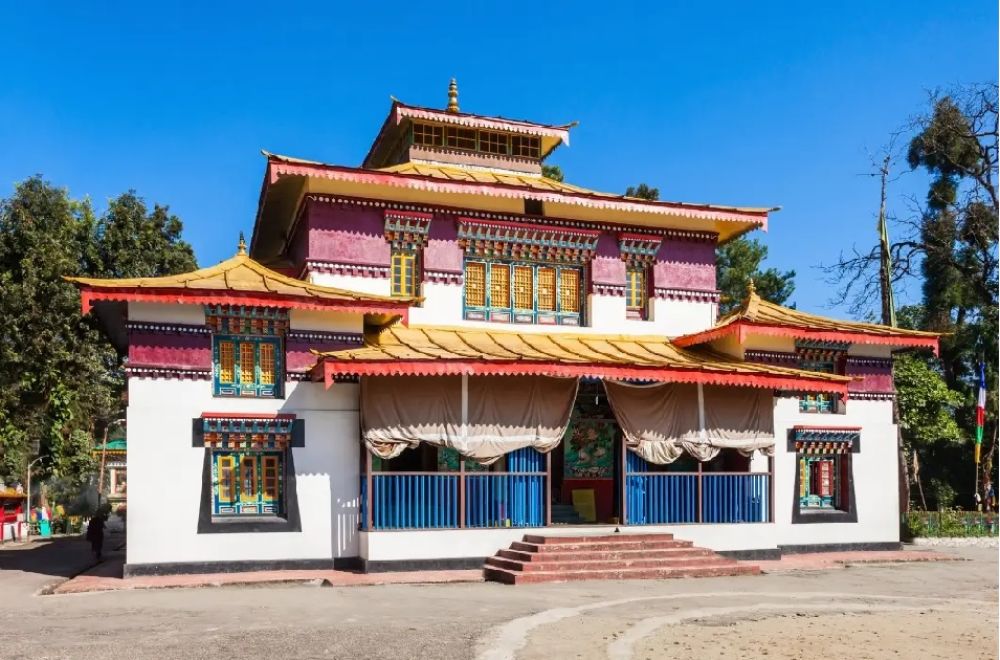

Nestled in the serene landscapes of Gangtok, Sikkim, the Enchey Monastery is a significant spiritual site with a rich history. Founded in the early 20th century, the monastery is approximately 200 years old and belongs to the Nyingma order of Vajrayana Buddhism. Its name meaning "Solitary Temple," the Enchey Monastery was built on a site blessed by Lama Drupthob Karpo, a revered tantric master known for his flying powers. This sacred place was later constructed in the shape of a Chinese Pagoda, which resonates with the architectural aesthetics endemic to Buddhist religious buildings.
Tourism at Enchey Monastery began to flourish when Sikkim gradually opened up to tourists. Prior to the 1960s, Sikkim was a remote and inaccessible region, with only a trickle of the most adventurous travelers reaching its monasteries. The formal inauguration of tourism in Sikkim in 1962 was a turning point, leading to increased accessibility and interest in the region's cultural and spiritual heritage, including the Enchey Monastery.
By the 1970s and 1980s, Enchey Monastery had become a pivotal stop for tourists interested in Buddhism, Himalayan culture, or simply seeking the tranquility offered by the monastery's serene environs. As tourism infrastructure developed, more visitors were able to access the monastery, making it one of the most visited attractions in Gangtok.
In the 21st century, the Sikkimese government and local Buddhist communities have taken steps to preserve and promote the monastery, incorporating it into various cultural tourism circuits. With these efforts, the Enchey Monastery has become well-integrated into the spiritual and cultural itinerary of visitors to Sikkim.
The latest trends in tourism at the Enchey Monastery reflect a broader interest in sustainable and experiential travel. Visitors today are looking for authentic experiences, and they find it through participation in monastery activities, including prayers and festivals. One of the most significant festivals is the Detor Cham, the annual mask dance festival held on the 18th and 19th days of the 12th lunar month of the Tibetan Calendar.
Moreover, tourists are increasingly conscious of the impact of their travel and are engaging in more responsible practices, minimizing their environmental footprint, respecting local customs, and contributing to the community's well-being. Eco-friendly accommodations and locally-guided tours have become more popular, in line with the global shift towards more mindful tourism.
Additionally, the advent of social media has played a vital role in shaping the contemporary image of Enchey Monastery. Picturesque photos of the monastery's architecture and its vibrant festivals are regularly shared across platforms, enticing a new generation of travelers to explore this spiritual haven.
For those interested in visiting the Enchey Monastery, it is open to visitors throughout the year. However, the best time to visit is during the months of October to December for clear views of the surrounding mountains or in January to witness the vibrant Detor Cham festival. Visitors should dress modestly and are reminded to respect the sanctity of the monastery premises.